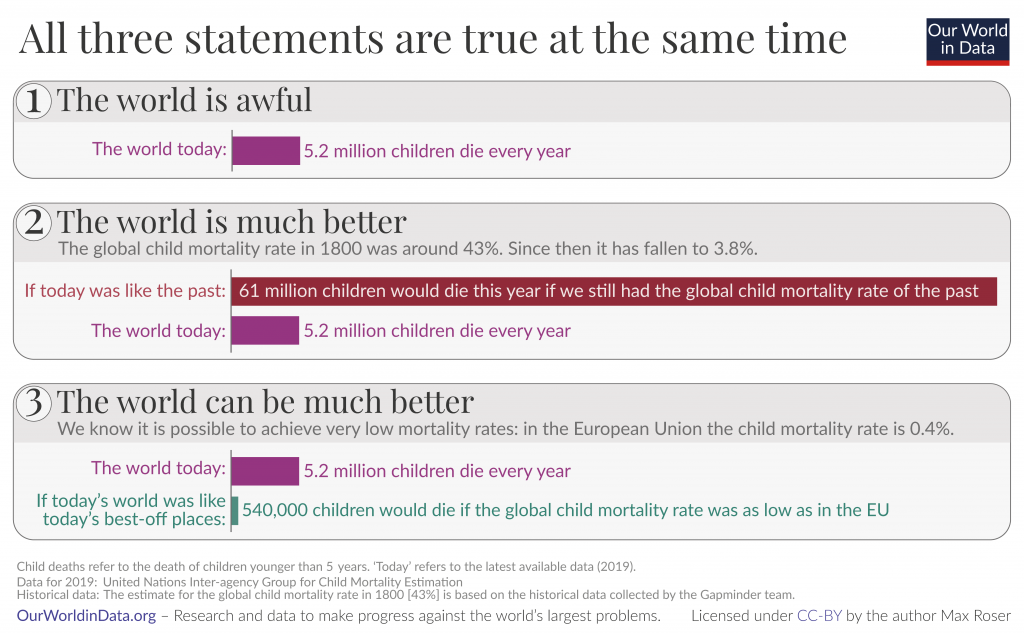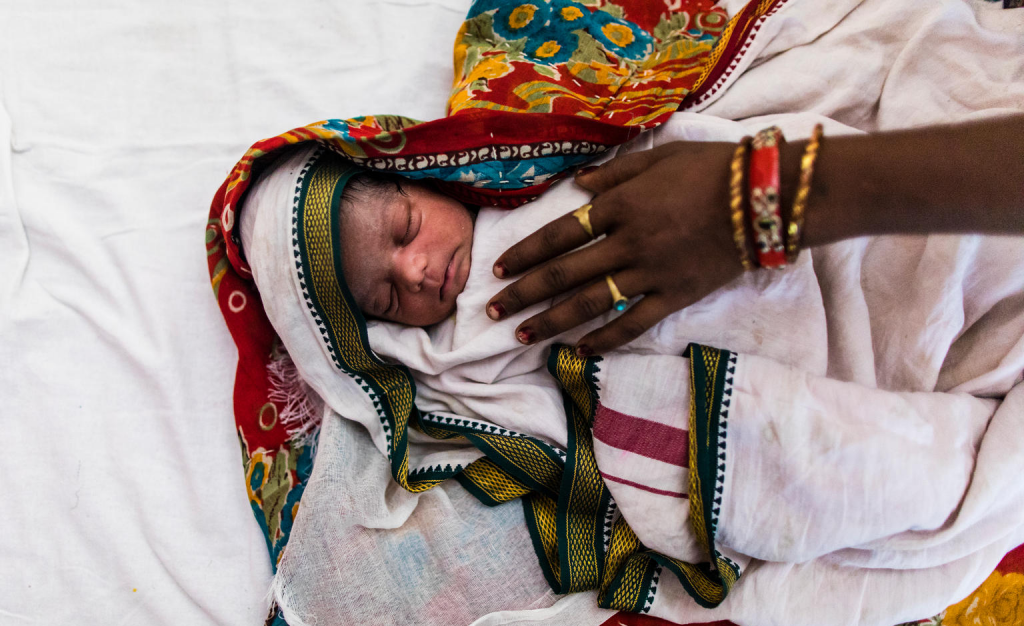Through child mortality change—world can be better
The world is awful. The world is much better. The world can be much better.
Makliya Mamat / March 28, 2022
Statistics, when measured accurately over time, reveal the big picture of progress and provide a powerful tool for shaping the future.
As I wrote about in my previous blog, world progress has changed in a dramatic way. Reflecting on the changes of the past century, it’s evident that the world has transformed in unimaginable ways.
Consider someone born in the early 20th century. Fast forward 50 years, and they would witness the advent of airplanes, computers, and vaccines—innovations that seemed almost magical. Now, imagine someone born today. Though they might marvel at our advancements, many aspects of life would seem familiar. They could drive a car just as people did decades ago. The pace of progress has undeniably slowed.
But beyond the rate of progress, let’s focus on how the world is changing. There are numerous areas where significant improvements have been made, where conditions are still dire, and where we know things can get better. Child mortality is a poignant example, illustrating three truths simultaneously:

This world is awful
Of the 137 million children born every year, 3.8% die before their fifth birthday. This equates to 5.2 million children annually, or about 14,000 every day.Of the 137 million children born every year, 3.8% die before their fifth birthday. This equates to 5.2 million children annually, or about 14,000 every day.
The world is much better
At the beginning of the 19th century, an estimated 43% of the world’s children died by age five. If that rate persisted, over 60 million children would die each year—166,000 every day.
The world can be much better
The European Union has the lowest child mortality rate, at 0.4%, which is ten times lower than the global average. In the EU, 1-in-250 children die, compared to 1-in-25 globally. If global child mortality matched the EU’s, 5 million fewer children would die each year.
Yet, even a 1-in-250 child mortality rate is too high. These deaths are preventable, and achieving the EU’s level of health globally would be a significant milestone. History teaches us that change is possible. The dramatic reduction in child mortality over the centuries shows we can transform our world. Recognizing our capacity to effect change is crucial.
Things change
Progress doesn’t happen on its own. For millennia, our ancestors faced the grim reality of high child mortality with little recourse. The improvement we see today is the result of scientific, political, and economic advancements made by recent generations.
When contemplating global change, it’s essential to hold two perspectives simultaneously: understanding how dire the world remains and recognizing that a better world is achievable.

Contents
Newsletter
- Updates from Makliya Notes will be delivered to your inbox.

